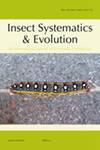Calcatedessa gen.n. a new genus sister to Grammedessa Correia & Fernandes (Heteroptera, Pentatomidae, Edessinae) based on a cladistic analysis
IF 1.3
3区 农林科学
Q2 ENTOMOLOGY
引用次数: 0
Abstract
Grammedessa Correia & Fernandes, 2016 is a genus raised to include some species of Edessa Fabricius, 1803 that is a very common group of stink bugs inhabiting only the Neotropical region. Grammedessa was proposed excluding a few species that were morphologically similar but not completely fitting in the diagnostic requirements of the genus. Grammedessa was also proposed without considering a phylogenetic context. In this work, the monophyly of Grammedessa was tested using a cladistic analysis, including all species that were originally excluded, under both Maximum Parsimony and Bayesian methods. As a result, six new species are now included in Grammedessa, which will be described in a forthcoming paper; Edessa botocudo Kirkaldy, 1909 was considered an unnecessary new name for Edessa hamata Walker, 1868 that was transferred to Grammedessa, resulting in G. hamata (Walker, 1868) comb.n. Calcatedessa gen.n., a new genus sister to Grammedessa, is here proposed to include four new species: C. anthomorpha sp.n., C. clarimarginata sp.n., C. germana sp.n. and C. temnomarginata sp.n. The Calcatedessa–Grammedessa clade and both genera were recovered as monophyletic by Maximum Parsimony and Bayesian methods. An identification key to the species of Calcatedessa gen.n. is provided. The new genus is distributed in Guyana, Suriname, French Guyana, and Brazil.Calcatedessa gen.n。基于支序分析的Grammedessa Correia&Fernandes(异翅目,Pentatomicae,Edesinae)的新姐妹属
Grammedessa Correia&Fernandes,2016是一个属,包括Edessa Fabricius的一些物种,1803,这是一种非常常见的蝽类,仅栖息在新热带地区。Grammedessa被提议排除少数形态相似但不完全符合该属诊断要求的物种。Grammedessa也是在没有考虑系统发育背景的情况下提出的。在这项工作中,Grammedessa的单系性使用支序分析进行了测试,包括在最大简约性和贝叶斯方法下最初被排除的所有物种。因此,Grammedessa中现在包含了六个新物种,这将在即将发表的论文中进行描述;Edessa botocudo Kirkaldy,1909年被认为是Edessa hamata Walker,1868年转移到Grammedessa的一个不必要的新名称,导致G.hamata(Walker,1878)comb.n.Calcatedessa gen.n,Grammedesa的一个新属姐妹,在这里被提议包括四个新种:C.antomorpha sp.n,C.clarimarginata sp.n。,C.germana sp.n和C.temnomarginata sp.n.Calcatedessa–Grammedessa分支和这两个属通过最大解析和贝叶斯方法恢复为单系。提供了一个Calcatedessa gen.物种的鉴定密钥。新属分布于圭亚那、苏里南、法属圭亚那和巴西。
本文章由计算机程序翻译,如有差异,请以英文原文为准。
求助全文
约1分钟内获得全文
求助全文
来源期刊

Insect Systematics & Evolution
生物-进化生物学
CiteScore
3.00
自引率
0.00%
发文量
15
审稿时长
>12 weeks
期刊介绍:
Insect Systematics & Evolution (ISE) publishes original papers on all aspects of systematic entomology and the evolutionary history of both extant and extinct insects and related groups. Priority is given to taxonomic revisions and phylogenetic studies employing morphological and molecular data. ISE also welcomes reviews and syntheses that can appeal to a wide community of systematic entomologists. Single species descriptions, regional checklists, and phylogenetic studies based on few taxa or single molecular markers will generally not be accepted.
 求助内容:
求助内容: 应助结果提醒方式:
应助结果提醒方式:


